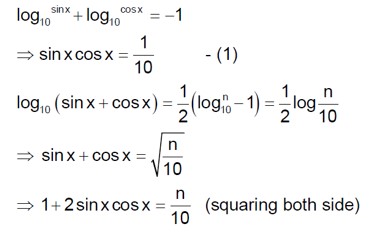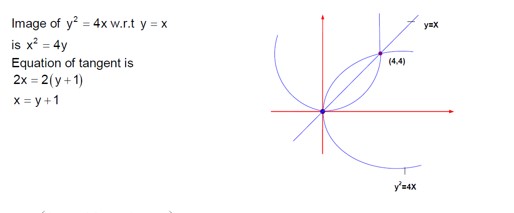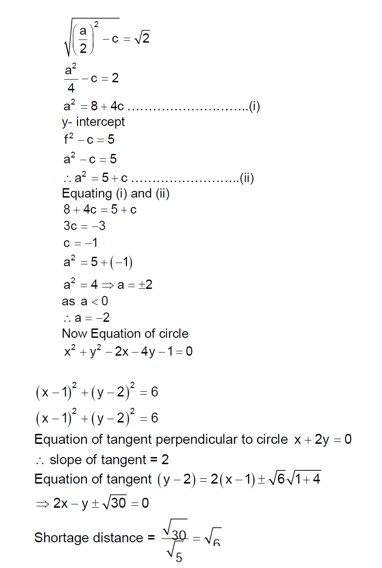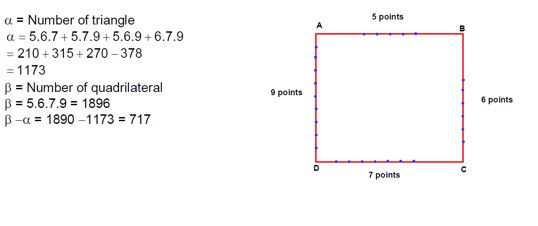Ncert Solutions Maths class 11th
Get insights from 1.6k questions on Ncert Solutions Maths class 11th, answered by students, alumni, and experts. You may also ask and answer any question you like about Ncert Solutions Maths class 11th
Follow Ask QuestionQuestions
Discussions
Active Users
Followers
New answer posted
2 months agoContributor-Level 9
(|x| - 3)|x + 4| = 6

(-x - 3) (- (x + 4) = 6
(x + 3) (x + 4) = 6 ⇒ x² + 7x + 12 = 6 ⇒ x² + 7x + 6 = 0
(x + 1) (x + 6) = 0 ⇒ x = -6 (since x < -4)
Case (ii) -4 ≤ x < 0
(-x - 3) (x + 4) = 6
⇒ -x² - 7x - 12 = 6
⇒ x² + 7x + 18 = 0
The discriminant is D = 7² - 4 (1) (18) = 49 - 72 < 0, so no real solution.
Case (iii) x ≥ 0
(x - 3) (x + 4) = 6
⇒ x² + x - 12 = 6
⇒ x² + x - 18 = 0
x = [-1 ± √ (1² - 4 (1) (-18)] / 2 = [-1 ± √73] / 2
Since x ≥ 0 ⇒ x = (√73 - 1) / 2
Only two solutions.
New answer posted
2 months agoContributor-Level 9
log? /? [ (|z|+11)/ (|z|-1)²] < 2
(|z|+11)/ (|z|-1)² > (1/2)²
(|z|+11)/ (|z|-1)² > 1/4
⇒ 4|z| + 44 > |z|² - 2|z| + 1
⇒ |z|² - 6|z| - 43 < 0
⇒ |z| - 7 ≤ 0
∴ |z|max = 7
New answer posted
2 months agoContributor-Level 10
The inequality is experience ( (|z|+3) (|z|-1) / (|z|+1) * log?2 ) ≥ log√? 16.
The right side is log? (1/2) 16 = log? (2? ¹) 2? = (4/-1)log?2 = -4. This seems incorrect.
Let's assume the base of the log on the right is √2. log√? 16 = log? (1/2) 2? = 2 * log?2? = 8.
The inequality becomes: 2^ (|z|+3) (|z|-1) / (|z|+1) ≥ 8 = 2³.
So, (|z|+3) (|z|-1) / (|z|+1) ≥ 3.
Let |z| = t. (t+3) (t-1) / (t+1) ≥ 3
t² + 2t - 3 ≥ 3t + 3
t² - t - 6 ≥ 0
(t-3) (t+2) ≥ 0
Since t = |z| ≥ 0, we must have t-3 ≥ 0.
So, t ≥ 3, which means |z| ≥ 3.
The minimum value of |z| is 3.
New answer posted
2 months agoContributor-Level 10
We want to evaluate S = ∑ (r=1 to 10) r! (r³ + 6r² + 2r + 5).
We can rewrite the polynomial r³ + 6r² + 2r + 5 as (r³+6r²+11r+6) - 9r - 1.
Note that (r+1) (r+2) (r+3) = r³+6r²+11r+6.
So the term is r! [ (r+1) (r+2) (r+3) - 9r - 1] = (r+3)! - (9r+1)r!
Rewrite 9r+1 as 9 (r+1) - 8.
The term is (r+3)! - [9 (r+1)-8]r! = (r+3)! - 9 (r+1)! + 8r!
Let T? = (r+3)! - 9 (r+1)! + 8r! This does not form a simple telescoping series.
Following the OCR's final calculation, the sum simplifies to 13! + 12! - 8 (11!).
= 11! (13*12 + 12 - 8) = 11! (156 + 4) = 160 (11!).
New question posted
2 months agoTaking an Exam? Selecting a College?
Get authentic answers from experts, students and alumni that you won't find anywhere else
Sign Up on ShikshaOn Shiksha, get access to
- 65k Colleges
- 1.2k Exams
- 679k Reviews
- 1800k Answers





